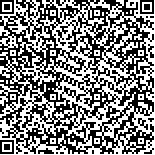本文已被:浏览 10317次 下载 5160次
投稿时间:2020-02-07
投稿时间:2020-02-07
中文摘要: 近年来,全球人口增长和气候变化显著,极端天气和自然灾害频发。随着现代生物技术的颠覆性发展和经济贸易的全球化进程,世界范围内生物安全风险环节和不安定因素增多,动物源性新发突发传染病疫情的暴发性增长趋势抬头,这些给我国生物安全治理体系和治理能力现代化发展提出新挑战。文章针对当前全球生物安全面临的主要风险与挑战,分析了美国、英国、日本等国2018年以来的国家生物安全战略和战略分析研讨的内容要点,提出了加强构建我国国家生物安全战略体系、法律法规体系和协同创新体系,以及进一步完善国家生物安全治理体系和治理能力建设的建议。
Abstract:In recent years, with the growing population, the significant changes in climate, the constant emergence of extreme weather and natural disasters, as well as the influence of the disruptive development of modern biotechnology and the globalization of economic and trade processes, the global biosafety risks and destabilizing factors have been increased, and the new outbreaks of infectious diseases is also increased explosively. These brought new challenges for the modernization of China's biosafety governance system and governance capabilities. Aiming at the main risks and challenges of global biosafety, this work analyzes the contents and main points of national biosafety strategy and strategic studies in the US, UK, Japan, and other countries since 2018. Meanwhile, some suggestions are put forward to strengthen the construction of national biosafety strategy system, laws and regulations systems, and collaborative innovation system, and further improve the national biosafety governance system and governance capacity building.
keywords: biosafety public health strategic bioresources
文章编号: 中图分类号: 文献标志码:
基金项目:
| 作者 | 单位 |
| 陈方 | 中国科学院成都文献情报中心 成都 610041 |
| 张志强 | 中国科学院成都文献情报中心 成都 610041 |
| 丁陈君 | 中国科学院成都文献情报中心 成都 610041 |
| 吴晓燕 | 中国科学院成都文献情报中心 成都 610041 |
引用文本:
陈方,张志强,丁陈君,吴晓燕.国际生物安全战略态势分析及对我国的建议[J].中国科学院院刊,2020,35(2):204-211.
CHEN Fang,ZHANG Zhiqiang,DING Chenjun,WU Xiaoyan.Analysis of Global Biosafety Strategy and Recommendations to China[J].Bulletin of Chinese Academy of Sciences,2020,35(2):204-211.
陈方,张志强,丁陈君,吴晓燕.国际生物安全战略态势分析及对我国的建议[J].中国科学院院刊,2020,35(2):204-211.
CHEN Fang,ZHANG Zhiqiang,DING Chenjun,WU Xiaoyan.Analysis of Global Biosafety Strategy and Recommendations to China[J].Bulletin of Chinese Academy of Sciences,2020,35(2):204-211.


